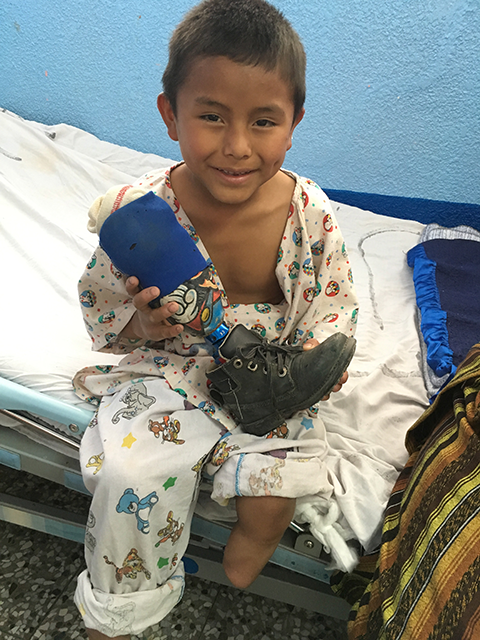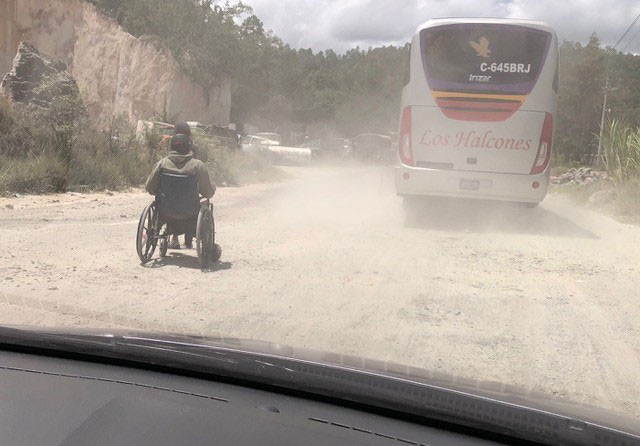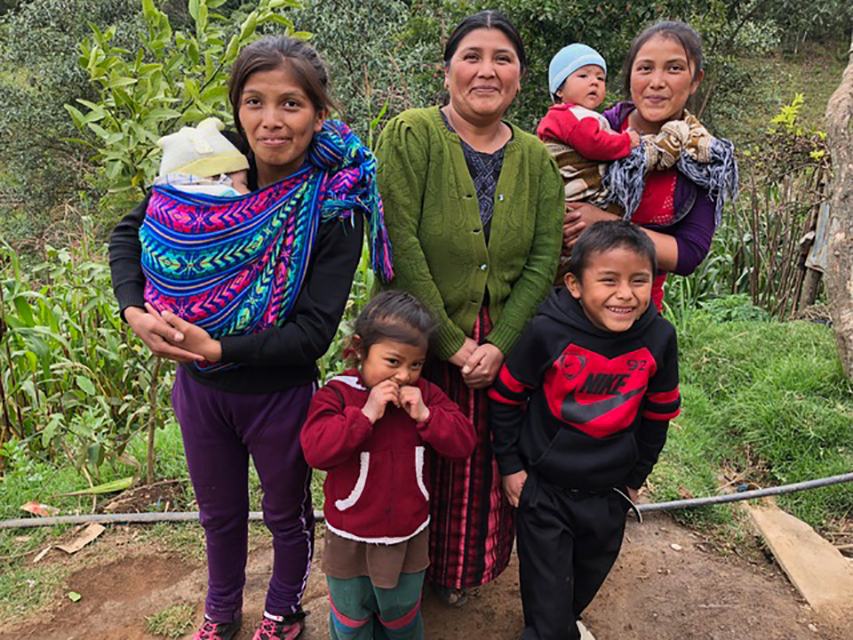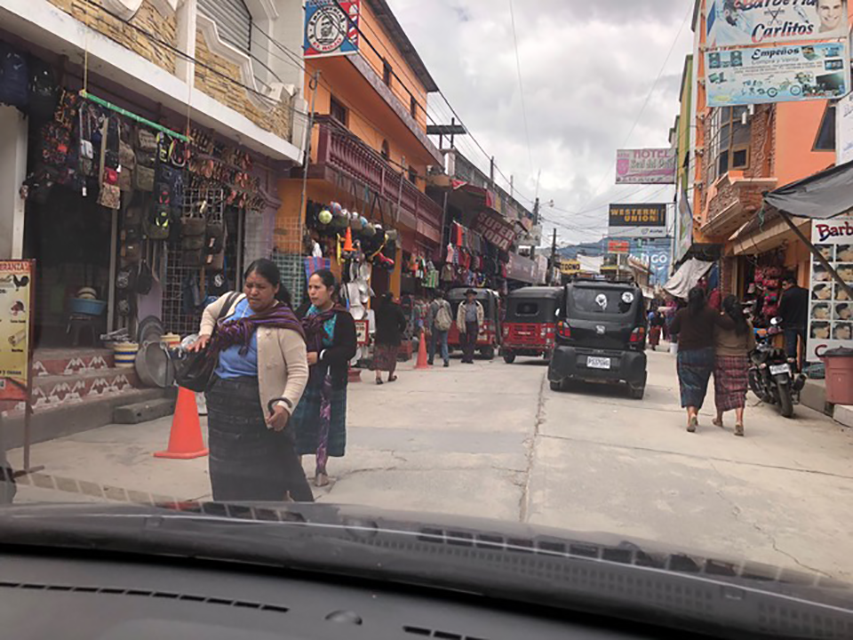Dr Mosher’s Health Review of Dani’s Case

This trip’s purpose was to check on Dani’s progress and assess whether more formal referral arrangements could be established for kids like him who lined up for help each time these surgery clinics came to the country.
People park their wheelchairs on road medians all day to beg coins. A reminder of the likely fate of a physically impaired kid in a country as poor as Guatemala. And a reminder of what kind of life we want to help Dani avoid.


He lives in a mountain town, a three to five hour drive over a very rough and dangerous road from the nearest city with resources. You appreciate the beauty carefully, lest you slide off the road and become yet another nameless cross.
The folks who live in his town are primarily indigenous who speak Q’anjob’al, one of several Mayan dialects. Facility with Spanish is still limited here.
What we found at Dani’s house was both disappointing and enlightening. He walked with crutches so smoothly, it was clear that he’d been using them, rather than the prosthesis, for a long time. Without crutches, he walked as clumsily as his handicapped chicken.
Moreover, he held the prosthesis off the ground as he walked. We found that his stump had shrunken, was very loose in the socket of his prosthesis, and had already developed a couple of inflamed, sore spots. I was worried that the skin would soon break down, and probably get infected.
Also, the brace which was meant to hold his surgically corrected foot in the normal position was ill-fitting and loose. Already his foot was twisting back to its abnormal position.
He wore shoes with no laces – no support.
The path to his house from the road was steep and slippery.
The front patio of his house was of dirt (mud in the rainy season) and uneven. A poor surface to practice walking with a prosthesis.
He has a supportive mother and family, but no father (he’s in “the North.” A place where, we learned by speaking to several townfolk, a large percentage of the men had gone. They work in the U.S. and send back money when they can).
But Dani’s irresistible dimples show you how much he would love to run and jump and play soccer, like any other kid. His physical limitations show no signs of dousing his spark for life:he put on his prosthesis and followed us up the steep path between their corn fields as we left.


We brainstormed Dani’s needs:
- Re-assessment by the prosthetist who built his device. Problem is, that professional’s office is eight hours drive from Dani’s town.
- A Physical Therapy professional to teach him and his mother how he should walk with the prosthesis and his club foot. Problem is, there are none in his town.
- A flat surface at his house to get proficient at walking.
- Some financial assistance to augment their expenses for travel, modification of orthotic equipment as he grows and wears them out with normal childhood activities, and school supplies (he has had very little schooling so far).
- A model to emulate.
We followed up on a lead to find this 11 year-old boy, Mario. He was at school in Dani’s town, running and playing soccer. His prosthesis is a cheaper version than Dani’s, but his optimism and energy are similar. His deformities are congenital, like Dani’s. Our hope is that the two of them will bond and re-inforce positive aspects of living with prostheses.

Hue-Hue (Way – way)
What the Guatemaltecos call Huehuetenango, the city closest to Dani’s town when they want to save syllables.
In this city, where the U.S. surgeons with Operation Rainbow conduct annual surgeries, we found:
- A professional out-patient Rehab facility which will work with Dani for $3 a visit;
- A local Rotary Club which, after we spoke of this case and our plan, has adopted the “Dani Project” under the direction of a physician who is a Rotarian; and an energetic community supporter, Manolo, who will bird-dog Dani’s needs.
Xela (Chela)
What the Guatemaltecos call Quetzaltenango when they want to save syllables.
We travelled two and a half hours from Hue-Hue to this city, looking for the prosthetist who made Dani’s device. We found him, showed him our videos and pictures, and asked his advice. He had solid ideas of what would be needed in terms of prosthesis and braces. He offered us all the options but suggested the less expensive. We liked the fact that having Gringos in his office didn’t result in his recommendation for the most expensive options. Additionally, he will travel to Hue-Hue twice a month to see patients, including Dani. His taller (workshop) can manufacture whatever is needed.

